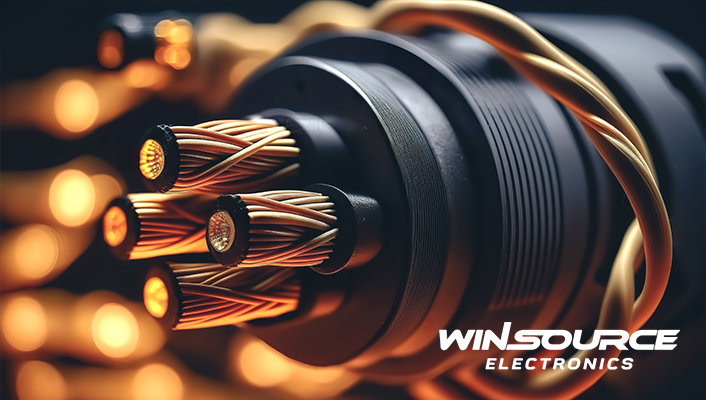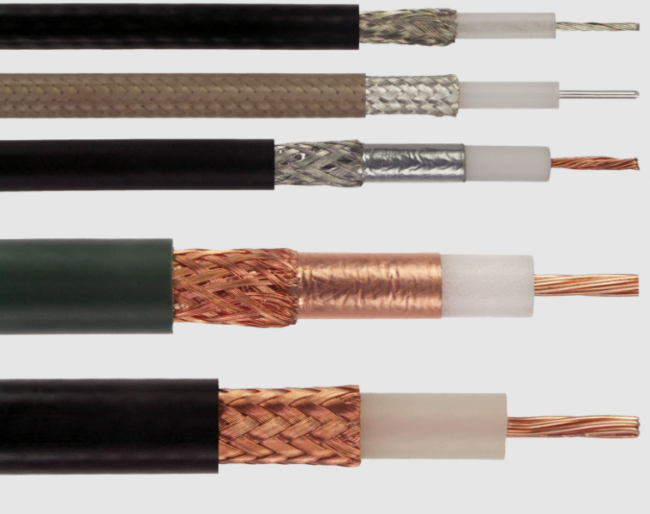
Table of Contents
ToggleIdentification of a Quality Coaxial Cable & Its Characteristics
Have you seen a blue wire (generally) coming out of the router? Yes, you reached right! We are talking about the ethernet cable, otherwise known as coaxial cable. Its usage has a significant role in daily digital life. It is widely used in the internet connection network and other digital server installations. ISPs (Inter service providers) use coaxial wire to offer connection. WIN SOURCE provides coaxial cable and its supportive accessories, such as Coaxial Connector (Rf) and other components used in cable connection. Because of being used in broadband internet connections, there is a demanding need for the genuine cord with original electronic components. Thankfully, we have all the reliable and durable connection components in our store.
What is Coaxial Cable?
A coaxial cable is a combined wire with an internal strand of thin wires. It serves as a signal transmission medium, characterized by its distinct construction consisting of four layers. At its core lies a conductive copper wire. So, it is responsible for carrying the digital signal. Inside the insulating cover of the coaxial cable are tiny wires of specific colours. These wires must be embedded in connectors in orderly arrangements.
The Formation of the Coaxial Cable
A layer of insulating material envelops this core. This insulation acts as a dielectric to prevent signal leakage. Encasing this insulator is a thin layer of net-like conductors, often composed of copper or alloy. Serving as both a conductor and a shield, this layer helps maintain signal integrity by minimizing interference. Finally, the outermost layer constitutes an insulating material that forms the cable’s protective outer skin. This meticulously engineered design enables coaxial cables to effectively transmit signals while safeguarding them from external disturbances.
Main Parts of the Coaxial Cable
There are certain secondary parts of the coaxial cable that we discuss in the following.
In the digital world of modern communication, the coaxial broadband cable stands as a masterpiece of IT. Coaxial cable has been in the market since the 80s. WIN SOURCE is seamlessly delivering the components, such as connectors, with a symphony of data and multimedia transmission. The marvel of this cable lies in its thoughtful composition. It has the exciting chemistry of a medley of components that work in unison to transmit signals with unparalleled precision and efficiency.
1. The Conductor’s Core
At, the core of the coaxial broadband cable resides the conductor, a meticulously crafted strand of high-quality copper. This conductor forms the lifeline of the cable to carry signals with minimal resistance and maximum conductivity. Its remarkable purity ensures that the transmitted data flows effortlessly, ready to embark on its journey.
2. Insulating Dielectric
Surrounding the conductor is the insulating Dielectric, a material chosen with care to reduce signal loss. This dielectric acts as a fortress, guarding the signal from energy leaks and interferences. Its unique properties maintain the integrity of the transmitted data. These unique qualities make it a great choice that the communication remains unblemished and vibrant.
3. Braided Mesh Conductors
Embracing the core is a layer of braided mesh conductors, a true guardian of signal integrity. Based on copper or its alloy, the intricate mesh serves a dual purpose. It acts as a conduit to allow the signal to flow smoothly. While simultaneously donning the role of a shield to fend off external electromagnetic disturbances. This symphonic interplay of roles ensures that the transmitted data remains unadulterated and free from interference.
4. Outer Insulating Jacket
As the symphony of components nears its crescendo, an outer insulating jacket encases the cable in protective armour. This jacket is designed to withstand the challenges posed by the physical environment. The purpose of insulation is to safeguard the delicate harmony within. It shields the cable from abrasion, moisture, and other potential hazards to retain that communication remains uninterrupted and resilient.
Different Types of Coaxial Cable & Their Uses

WIN SOURCE distributes a wide range of coaxial cable types. You can read and explore to buy any coaxial type you want.
– RG-6: Commonly used for cable TV and satellite signals due to its higher bandwidth capacity and lower signal loss.
– RG-59: Often used for analog video and CCTV installations, though it has higher signal loss compared to RG-6.
– RG-11: Offers even lower signal loss than RG-6, suitable for longer cable runs, like in larger buildings.
– RG-8: Used for high-frequency applications like amateur radio and certain networking setups.
– RG-58: Employed in various data communication applications such as early Ethernet networks.
– Miniature Coaxial Cables: Smaller in diameter. It is used in applications like connecting internal components in electronic devices.
– Triaxial Cable: Features an extra layer of insulation and shielding for reducing interference and enhancing signal quality.
– Twinaxial Cable: Designed for balanced data transmission in high-speed networking and serial communication.
– Hardline Coaxial Cable: used in high-power RF applications due to its durability and low signal loss.
– Semi-Rigid Coaxial Cable: Its inflexible design is ideal for precise microwave and RF applications.
– Heliax Cable: Combines high flexibility with low signal loss. It is suitable for cellular and microwave communications.
These are just a few examples of the various types of coaxial cables available on our online electronic parts selling store. Each type is tailored to specific applications and requirements.
Advantages of Coaxial Cable
The advantages of coaxial cables make them a popular choice for a wide range of communication and connectivity needs. These cables also offer dependable signal transmission and consistent performance.
1. Signal Quality of Digital & Analog Signals
2. Broadband Capabilities and Speed
3. Resistance to Interference
4. Long Distance Digital Communication
5. Durability and Reliability
We here at the WIN SOURCE, an electronic component supplier, ensure the quality of every single part we deliver to our valued customers. You can trust us while buying electronic elements and inventory from us. To find the component of your electronic needs, explore our website or give us a quotation.

COMMENTS